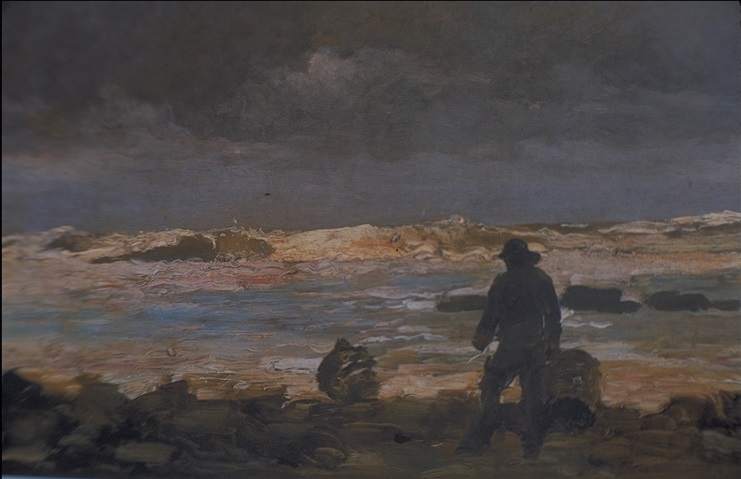
Once again, when we look at Homer's painting without the guided marking, it becomes difficult to see beyond the natural physical objects painted. Of course, the Sphinx is easy to spot, because the rock, as a physical object, looks like a Sphinx rock.* With the faces in the clouds discussed here, Homer sees and embodies those faces, but he manages to do that without a noticeable distortion of the truth of the natural objects. As in this painting, where the two faces blend in with the clouds, Homer's "images of what the thing is not" go unnoticed throughout his works. As mentioned before, I only know of two instances mentioning any such objects in Winslow Homer's work, one published by Joshua C. Taylor and the other mentioned in correspondence with Jules Prown.